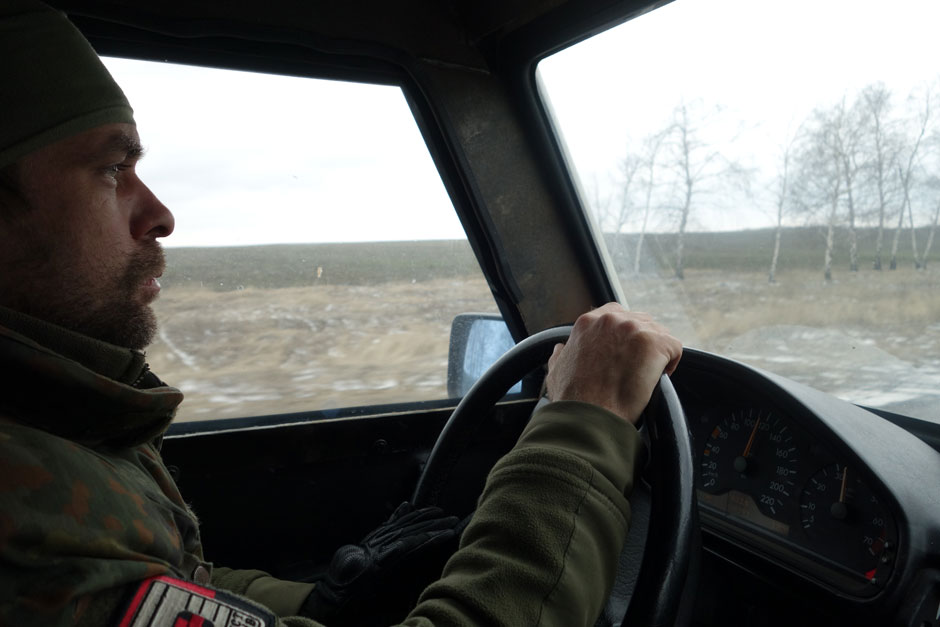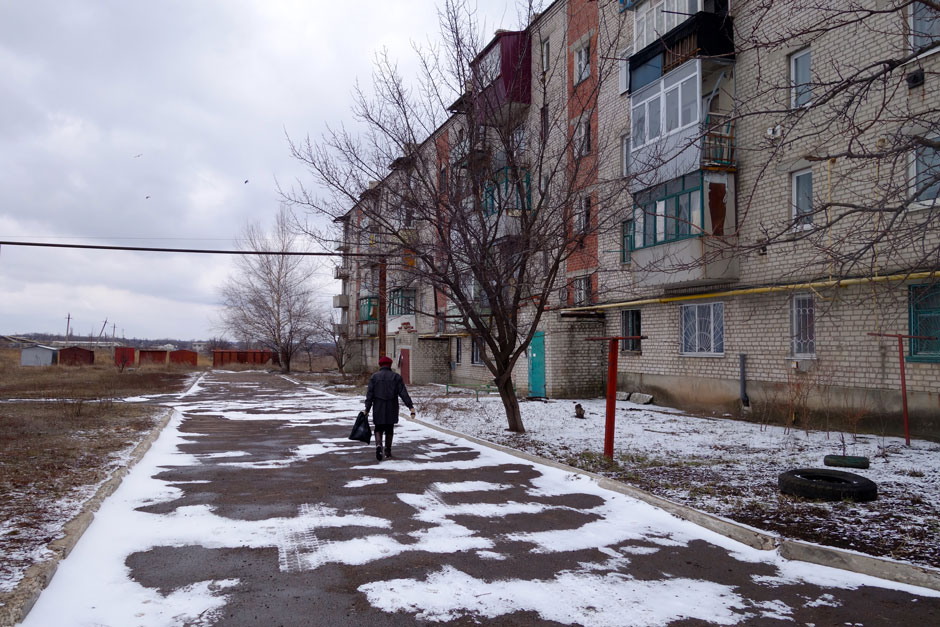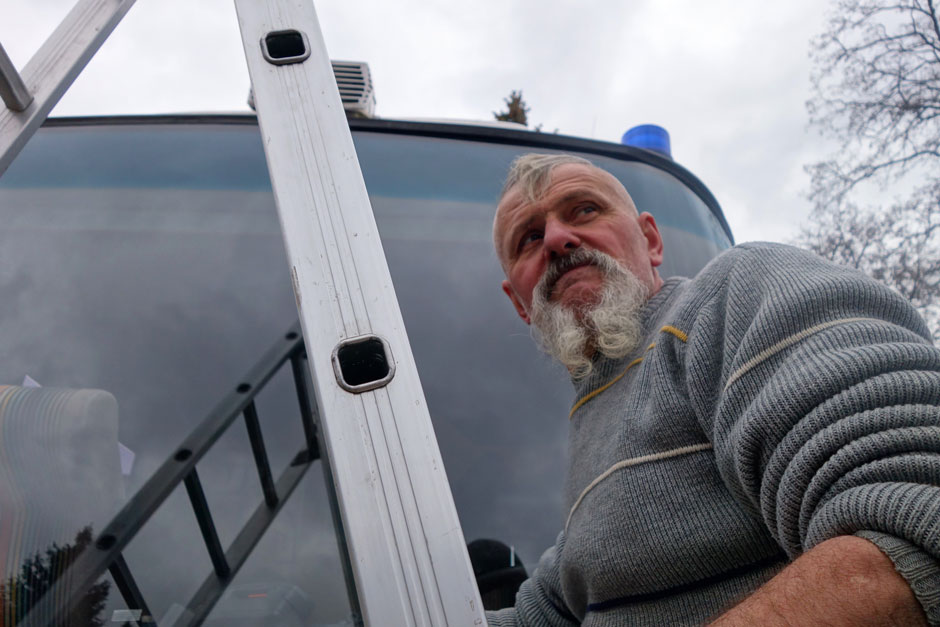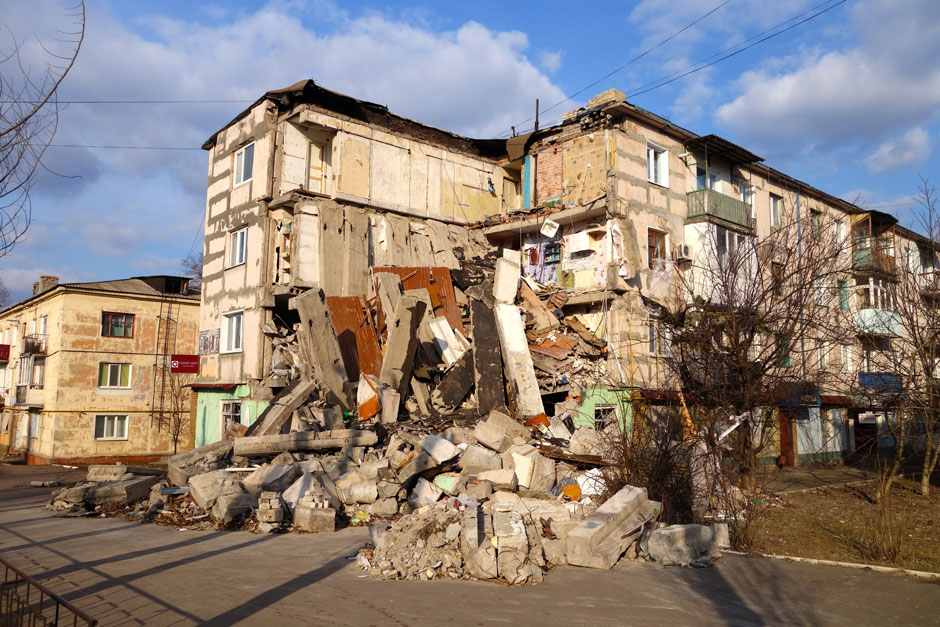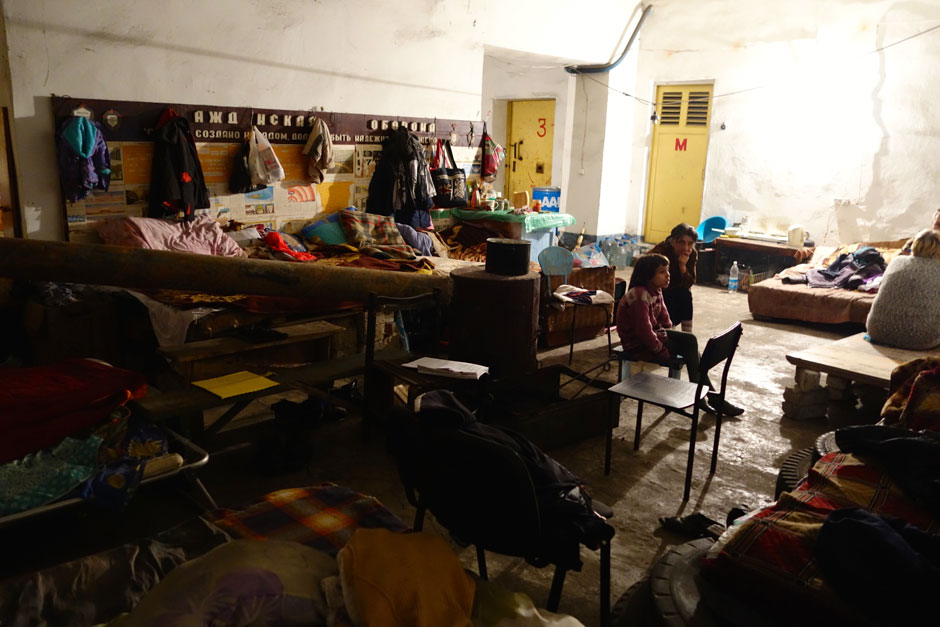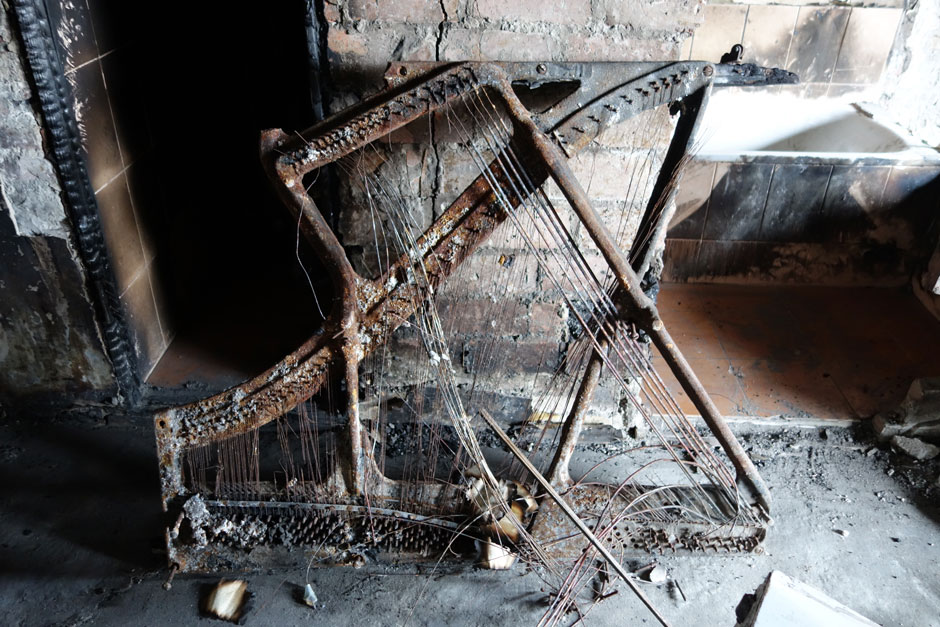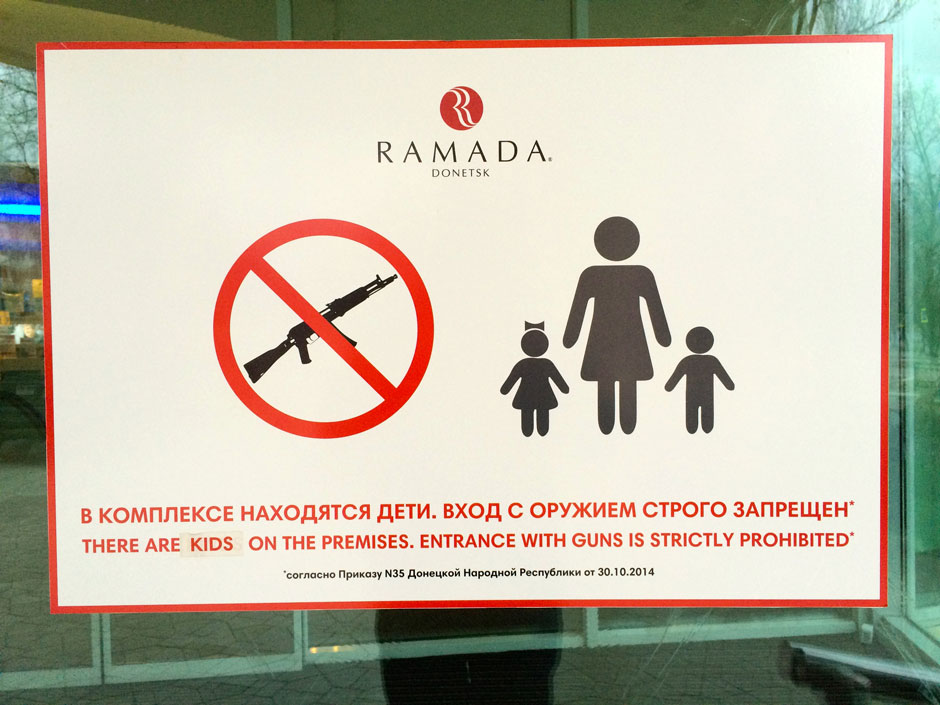In mid-February a second Ukrainian ceasefire came into effect. The fighting has not stopped, though it has been much reduced. Few people think it will last. The morale of soldiers on both sides is high. Civilians who remain in the areas where there is fighting have been emerging from their shelters and trying to resume some sort of normal life, though some still live underground. A huge proportion of the people who live in these areas have left. I took the following photos while reporting for The New York Review of Books from the region last month.
March 17: On the road from Popasnaya, a town under Ukrainian control. This is a dangerous stretch, and “Gnome”—his nom de guerre—was glancing nervously out over the fields in case we were sniped at. A few days earlier one of the tires of his armored vehicle had been shot out. He is a member of a volunteer medic team called Hospitallers. I wrote about Popasnaya for the NYRBlog.
March 17: Popasnaya is in government-controlled territory. Rebels in nearby Pervomaysk have been trying to hit a nearby checkpoint from which the Ukrainian forces are shooting at them. The area is called Cheryomushki and hardly anyone still lives here.
March 17: Oleksiy Reznikov, aged twenty-two. He is a tattooist and I met him in Pervomais’ke, close to Donetsk airport on the Ukrainian side of the lines. Soldiers and medics were having him tattoo them with their blood groups and nicknames, and some with patriotic Ukrainian themes and symbols. “This is a war we need to fight and everyone needs to find their niche,” he told me. “It raises morale…and then the fighters do a better job.”
March 17: Mazha, a Ukrainian Cossack and volunteer with the medical group Hosipitallers, working on renovating a mobile medical unit cum bus which has been donated to them. He told me that idea behind the Cossack top-knot was so that God could grab you easily when your time had come.
March 20: A destroyed building in rebel-held Pervomaysk, which is close to government-held Popasnaya. It appears to have been hit by a missile. Strangely, the shampoo bottles remain on the bathroom shelf. The rebels say they are being fired at from Popasnaya. (Pervomaysk is not the same place as government-held Pervomais’ke, which I also visited on the same trip.)
March 20: In rebel-held Pervomaysk. When I visited some forty-two people were still sleeping in this 1960s nuclear bomb shelter. When things were bad, some two hundred slept here. Some remained because their homes had been damaged and some were still too scared to return.
March 21: Anna Iureva, aged eighty-seven, lives in a nuclear bomb shelter in rebel-held Donetsk. She showed me a tin, with oil and wick, that they use for light when the electricity goes off, because they have run out candles. She says it gives off a horrible, choking smoke. She is from Pervomais’ke, which is in government-held territory, and does not want to return while Ukrainian forces remain. To while away the time she has taken to writing poetry. I wrote about her in this piece for the NYRBlog.
March 26: A worker inside Mariupol’s vast Ilyich iron and steel works, owned by Rinat Akhmetov, Ukraine’s richest man. Mariupol, on the Sea of Azov, is under Ukrainian government control but the rebels say want to take it. If they did the Ilyich plant might have to close. In a piece for the Review, I wrote at more length about the plant and Mariupol.
March 23: The remains of a piano in a flat in Adminposiolok, a rebel-held suburb of Donetsk near the airport. The area has been badly damaged and few people remain.
March 19: The entrance to the Ramada hotel in rebel-held Donetsk. Self-explanatory.


